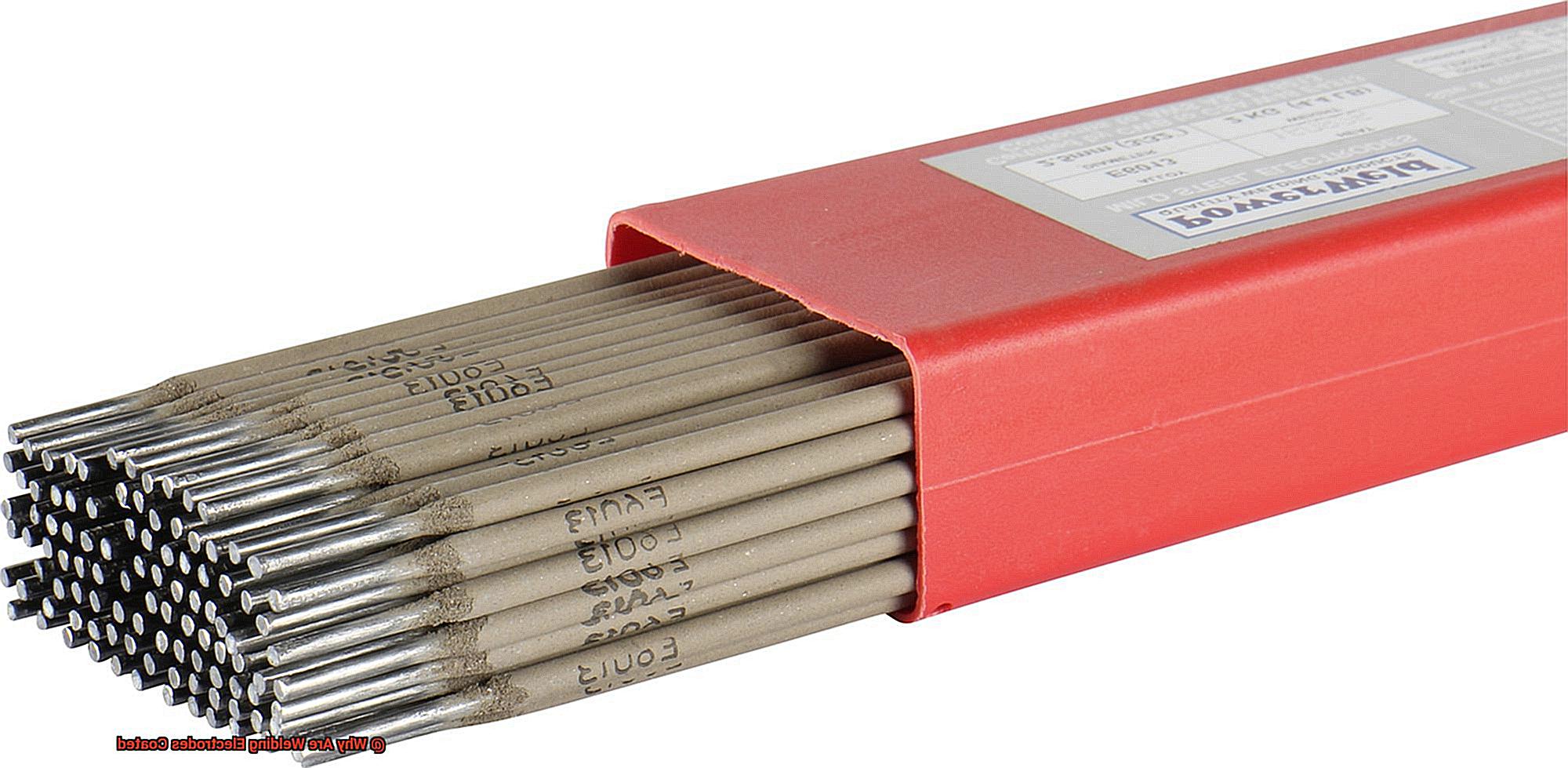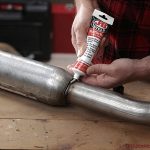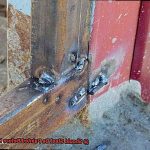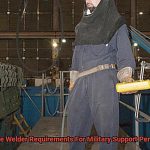Are you curious about the magic behind the seamless metal structures that surround us?
Well, my friend, welcome to the world of welding – a process that uses heat, pressure, and filler material to fuse metals together. But did you know that the welding electrode, a wire used to create an electric arc for welding metals, is coated with a special material?
This coating plays a crucial role in ensuring the weld’s quality and durability. So why are welding electrodes coated?
The answer lies in the unique properties of the coating material. It helps stabilize the arc, reducing spattering while protecting the weld pool from atmospheric contaminants.
But wait, there’s more. This protective layer also impacts the weld metal’s chemical composition, improving its mechanical properties such as strength, toughness, and corrosion resistance.
Essentially, it acts as a mediator between the welding electrode and base metal to ensure a clean and stable weld joint. In this blog post, we’ll dive deeper into this fascinating world of welding electrodes.
We’ll discuss different types of coating materials used and their functions while exploring how they impact the welding process. By understanding why electrodes are coated and how it influences welded metal structures’ quality and durability, you’ll have an even greater appreciation for these intricate creations.
So, let’s get started now.
What are Welding Electrodes?
Contents
These small but crucial tools are an essential component in the welding process.
They consist of a metal wire core and a coating that surrounds it. The coating on the welding electrode is incredibly important, as it ultimately determines the quality and characteristics of the weld.
The metal wire core of a welding electrode is typically made up of a material that is compatible with the base metal being welded. For example, if the base metal is steel, the welding electrode’s core would be made up of steel as well.
The coating on the welding electrode can vary in color, texture, and composition depending on the specific application. Coating welding electrodes serves multiple purposes.
First, it protects the weld pool from atmospheric contamination during the welding process. High temperatures can cause the metal to react with oxygen, nitrogen, and other gases in the air, leading to defects in the weld.
The flux coating on the welding electrode helps to shield the weld pool from these contaminants by releasing gases that displace the air surrounding the weld pool. Secondly, coating welding electrodes helps to stabilize the arc during welding.
The flux coating provides a protective layer that helps to maintain a stable arc length, preventing it from short-circuiting or becoming unstable. This stability is critical for creating a high-quality weld with consistent penetration and fusion.
Finally, coating welding electrodes also improves the quality and appearance of the weld. The flux coating contains various materials that can help refine the weld pool and promote better fusion between the base metals.
What is the Purpose of Coating Welding Electrodes?
Welding is a fascinating process that requires a skilled hand and an arsenal of tools.
One of the most crucial components in creating strong and durable welds is the welding electrode. These small but mighty tools consist of a metal wire core and a protective coating that work together to improve the quality of the weld.
The purpose of coating welding electrodes is multifaceted and critical to achieving successful results. First, the coating creates a blanket of shielding gas that protects the weld pool from atmospheric contamination such as oxygen, nitrogen, and hydrogen.
These gases can cause oxidation, porosity, embrittlement, and cracking in the weld. By creating a barrier between the weld pool and these gases, the coating helps to maintain the quality of the weld.
Moreover, the coating on welding electrodes stabilizes the arc by providing a high resistance path for electricity to flow through. This helps to maintain a stable arc length and prevent fluctuations in voltage and amperage.
A stable arc is crucial in producing high-quality welds that meet industry standards. Another benefit of coating welding electrodes is that they can contain alloying elements that are added to the weld.
These elements can improve the strength, corrosion resistance, or other properties of the weld. For instance, an electrode coated with titanium dioxide can add titanium to the weld, which can increase its strength and corrosion resistance.
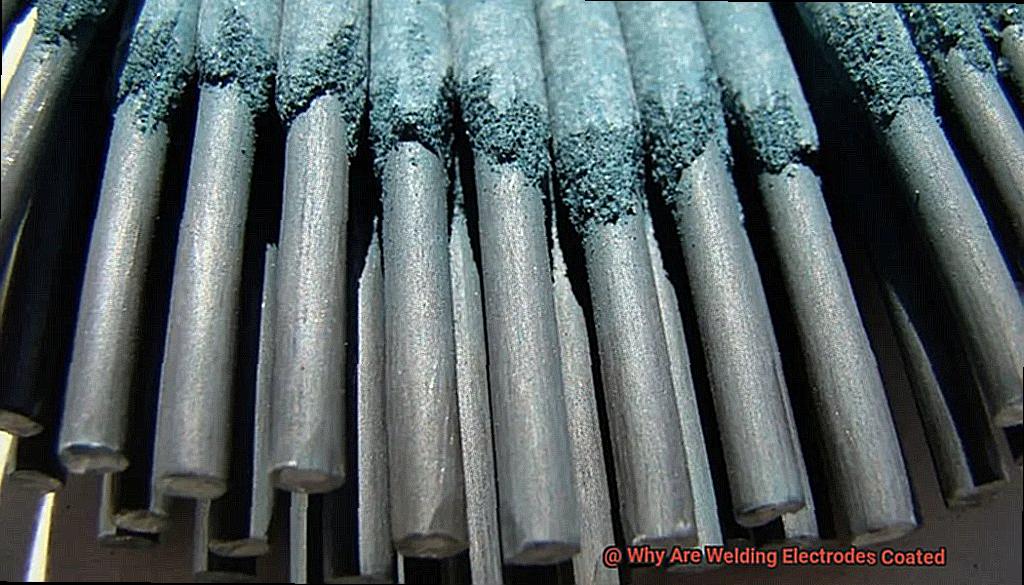
The specific type of coating used will depend on factors such as the material being welded, the welding process being used, and the desired properties of the finished weld.
How Does Coating Protect the Weld Pool from Atmospheric Contamination?
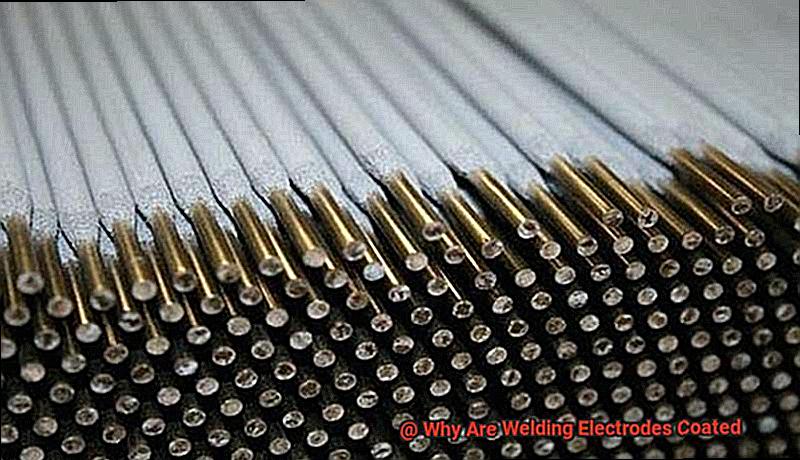
Atmospheric gases like oxygen, nitrogen, and hydrogen can contaminate the weld pool, leading to porosity, cracking, and poor weld quality.
But with the right coating, these problems can be avoided. Different coatings have varying properties and applications.
Some contain chemicals that react with oxygen to create a slag layer over the weld pool. This layer acts as a barrier between the weld pool and the atmosphere, preventing atmospheric gases from penetrating the weld puddle.
Other coatings release gases during welding that displace atmospheric gases from the weld pool, reducing the risk of contamination. Additionally, some coatings contain deoxidizers that remove oxygen from the weld pool to prevent defects like porosity.
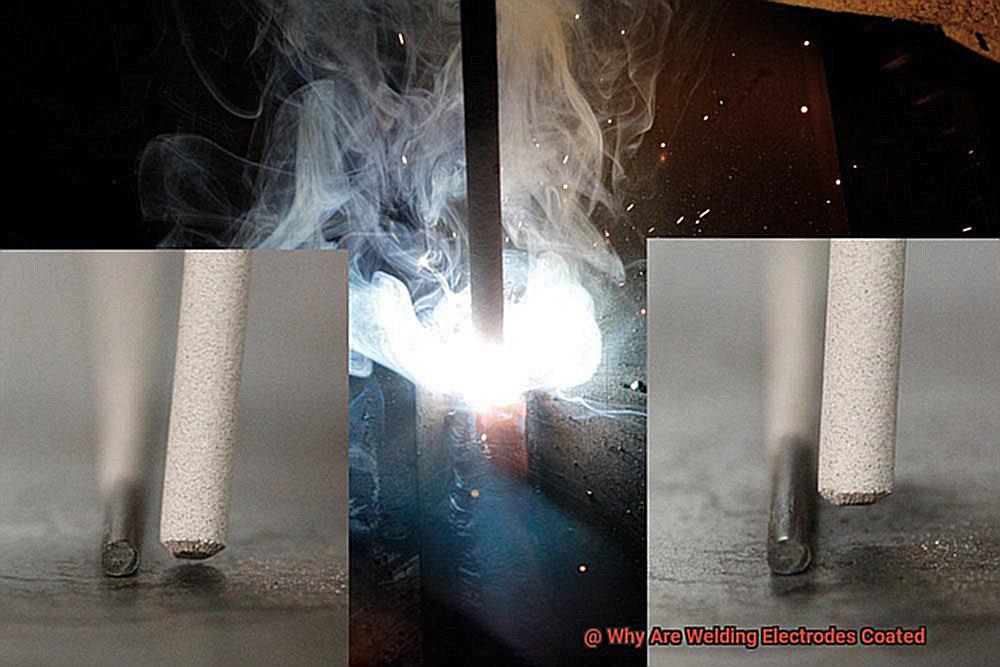
Choosing the appropriate coating is crucial for optimal performance and to prevent defects. For example, cellulose coatings are commonly used for welding pipes due to their excellent penetration and smooth bead profile.
However, they produce significant amounts of hydrogen gas which can cause hydrogen-induced cracking if not controlled correctly. In conclusion, coating on welding electrodes serves a vital role in protecting the weld pool from atmospheric contamination.
How Does Coating Help to Stabilize the Arc During Welding?
Welding is an art that requires precision, skill, and the right tools to achieve high-quality results.
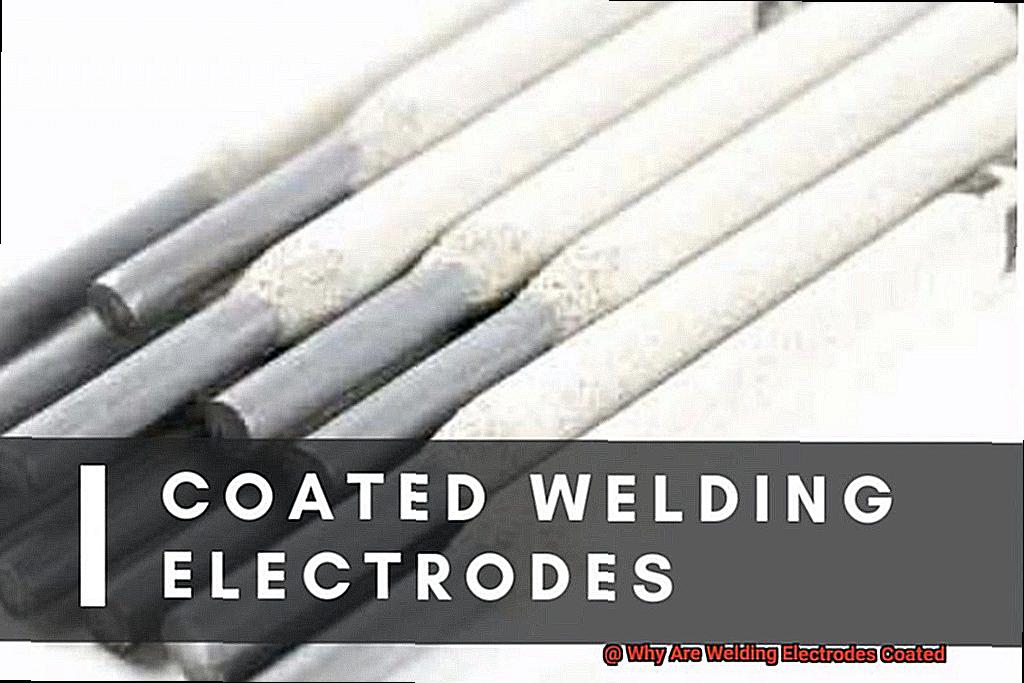
One of the most critical tools in a welder’s repertoire is the welding electrode, which is coated with a material that plays a vital role in stabilizing the arc during welding. But how exactly does coating help to stabilize the arc during welding?
One of the primary functions of the coating on the welding electrode is to produce a stable arc by controlling the rate of heat transfer from the electrode to the base metal.
This control is essential because if the transfer rate is too slow or too fast, it can cause instability in the arc and produce inconsistent results. However, with the coating’s help, the heat transfer rate is optimized, resulting in a stable arc that produces uniform and reliable welds.
The coating also helps to regulate the amount of current passing through the electrode, which further stabilizes the arc. When too much or too little current flows through the electrode, it can make the arc unstable and produce poor quality welds.
The coating acts as a buffer, regulating current flow and ensuring that the arc remains stable. Another crucial function of the coating is to protect against atmospheric contamination.
High temperatures during welding can cause oxidation and other reactions with gases in the air that weaken welds and make them more prone to cracking or other defects. Fortunately, the coating shields and prevents these reactions from contaminating the weld pool, resulting in stronger and more robust welds.
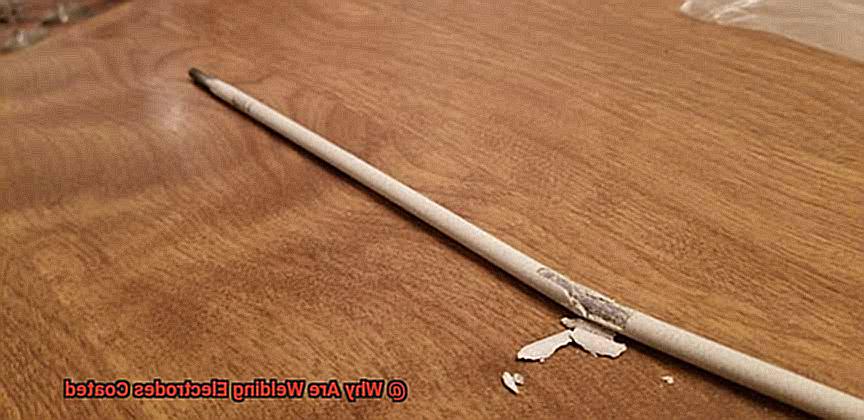
Lastly, coatings may contain additional alloying elements that enhance properties such as strength, toughness, and corrosion resistance. Coatings may have elements like manganese, molybdenum, or nickel that improve these properties significantly.
So, coatings on welding electrodes are essential for producing high-quality welds. They help to stabilize the arc by regulating heat transfer and current flow while protecting against contamination from atmospheric gases.
24UHx0dhv-Y” >
How Does Coating Improve the Quality and Appearance of the Weld?
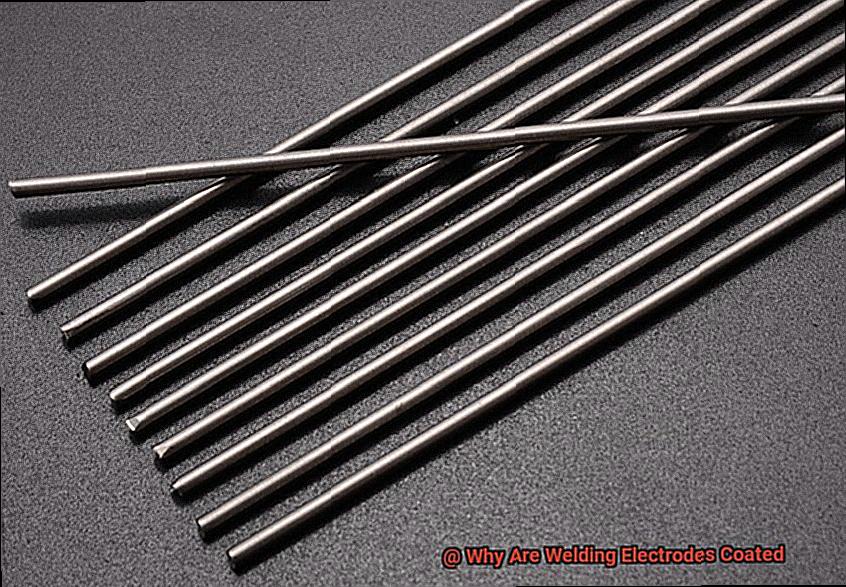
Welding is an art form that requires a steady hand and a sharp eye.
To produce welds that are both strong and visually appealing, welders need to use the right electrode, coated with a material that acts as a stabilizing force. But did you know that coating also plays a crucial role in improving the quality and appearance of the weld?
Coating can make all the difference when it comes to creating flawless welds. Depending on the type of coating used, it can prevent oxidation, improve weld penetration, and reduce spatter.
Additionally, it can enhance the mechanical properties of the weld, making it stronger and more durable. One of the primary benefits of coating is its ability to prevent oxidation.
During welding, high temperatures can cause the metal to react with the surrounding air, resulting in oxidation. This can weaken the weld and make it more prone to cracking over time.
Coating helps to prevent this by creating a barrier between the metal and the air. This barrier helps to prevent oxygen from coming into contact with the hot metal, ensuring a stronger and longer-lasting weld.
Coating also improves penetration during welding. When welding thicker metals, achieving full penetration without proper preparation can be challenging.
Coated electrodes help by providing a focused arc that melts through the metal more efficiently, allowing for better penetration and stronger welds. The result is a well-bonded and sturdy structure that can withstand stress and strain.
Coating can also reduce spatter during welding. Spatter occurs when small bits of molten metal are ejected from the weld pool, creating a messy appearance and potentially damaging nearby surfaces.
Coated electrodes help to reduce spatter by controlling the arc and directing it more precisely onto the metal being welded. This results in a cleaner and more polished appearance in the final product.
Overall, coating plays a critical role in improving both the quality and appearance of the weld. By preventing oxidation, improving penetration, and reducing spatter, coated electrodes help to create strong, durable welds that look great too.
Also Read: How bright is a welding arc in lumens? – The Welding Guru
Conclusion
In conclusion, welding electrodes are small but mighty tools that play a critical role in creating strong and durable welds.
The coating on the welding electrode is vital as it determines the quality and characteristics of the weld. Without proper coating, the welding process would be prone to failure due to atmospheric contaminants and unstable arcs.
The purpose of coating welding electrodes is multifaceted and crucial to achieving successful results. It creates a protective shield around the weld pool, preventing harmful atmospheric contamination such as oxygen, nitrogen, and hydrogen from weakening the weld.
Additionally, it stabilizes the arc by providing a high resistance path for electricity to flow through, ensuring consistent heat distribution throughout the weld. Coating on welding electrodes serves an essential role in improving both the quality and appearance of the weld.
By preventing oxidation, improving penetration, and reducing spatter, coatings enhance not only the mechanical properties of the weld but also its aesthetic appeal. Choosing appropriate coatings for different applications is crucial for optimal performance and to prevent defects.
In short, coating welding electrodes is no small feat; it’s a critical step in ensuring strong and durable welds that withstand even the toughest conditions.
